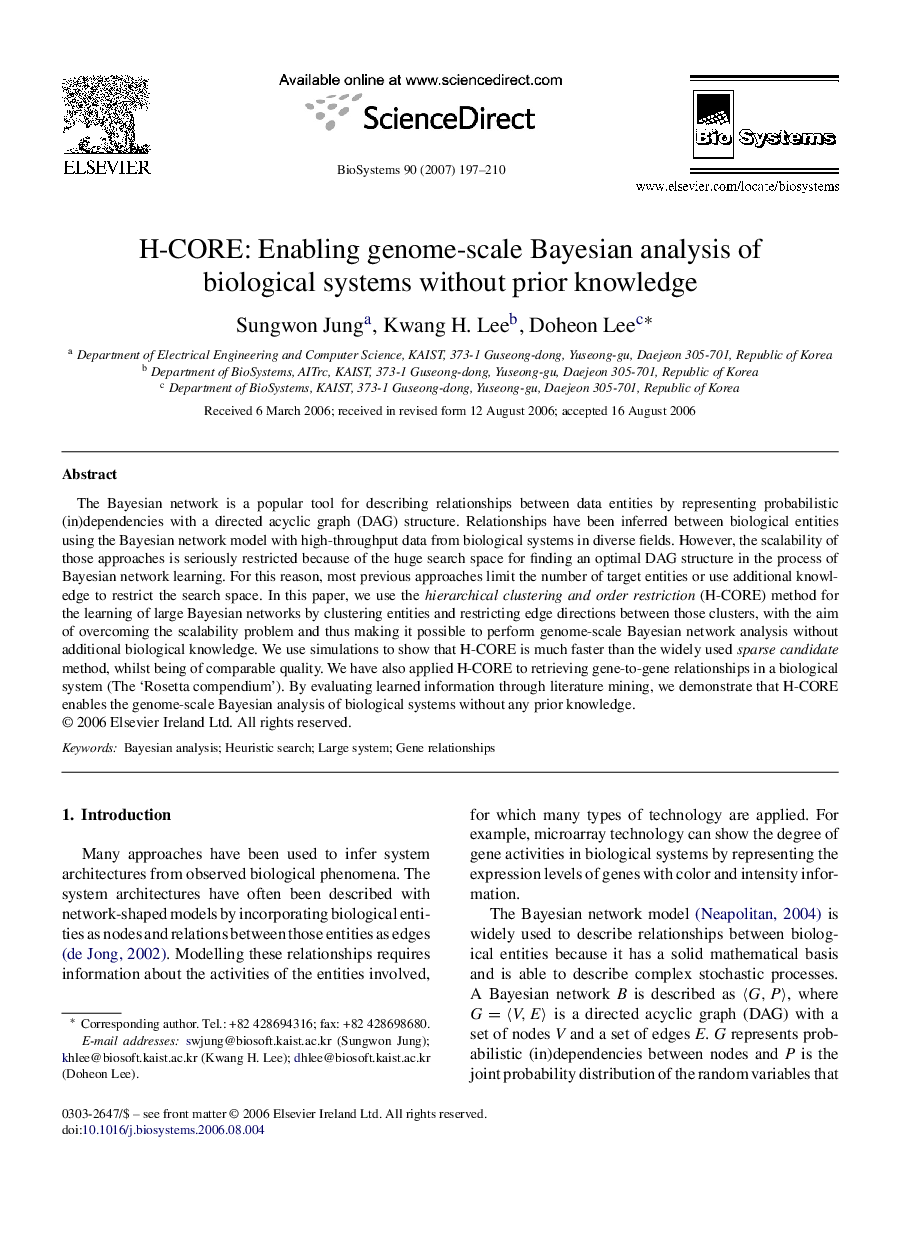| Article ID | Journal | Published Year | Pages | File Type |
|---|---|---|---|---|
| 2076831 | Biosystems | 2007 | 14 Pages |
The Bayesian network is a popular tool for describing relationships between data entities by representing probabilistic (in)dependencies with a directed acyclic graph (DAG) structure. Relationships have been inferred between biological entities using the Bayesian network model with high-throughput data from biological systems in diverse fields. However, the scalability of those approaches is seriously restricted because of the huge search space for finding an optimal DAG structure in the process of Bayesian network learning. For this reason, most previous approaches limit the number of target entities or use additional knowledge to restrict the search space. In this paper, we use the hierarchical clustering and order restriction (H-CORE) method for the learning of large Bayesian networks by clustering entities and restricting edge directions between those clusters, with the aim of overcoming the scalability problem and thus making it possible to perform genome-scale Bayesian network analysis without additional biological knowledge. We use simulations to show that H-CORE is much faster than the widely used sparse candidate method, whilst being of comparable quality. We have also applied H-CORE to retrieving gene-to-gene relationships in a biological system (The ‘Rosetta compendium’). By evaluating learned information through literature mining, we demonstrate that H-CORE enables the genome-scale Bayesian analysis of biological systems without any prior knowledge.
